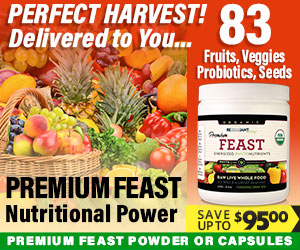Table of Contents
- 1. Choose Fresh, Organic Raw Produce
- 2. Educate Yourself on Nutrient Preservation
- 3. Practice Portion Control and Create Balanced Meals
- 4. Know the Best Raw Food Combinations
- 5. Include Variety for Complete Nutrition
- 6. Prioritize Food Safety and Hygiene
- 7. Use Appropriate Tools and Techniques
- 8. Incorporate Supplements Where Necessary
- 9. Stay Informed on 2025 Trends in Raw Food Nutrition
- 10. Listen to Your Body and Adapt Accordingly
1. Choose Fresh, Organic Raw Produce
Prioritize Organic and Local Raw Fruits and Vegetables
One of the fundamental principles of optimal raw food nutrition in 2025 is selecting fresh, organic produce. Organic fruits and vegetables are grown without synthetic pesticides or fertilizers, which helps preserve their nutrient integrity. When sourcing raw produce locally, you not only support sustainable farming but also ensure you’re getting the freshest options possible.
Freshness directly impacts nutrient content â fresh raw produce retains more vitamins, enzymes, and antioxidants. For example, berries like blueberries contain higher levels of vitamin C and anthocyanins when consumed soon after harvesting. Choosing organic, locally sourced items guarantees maximum raw food nutrition and minimizes exposure to harmful chemicals.
How to Select the Best Raw Produce
When shopping, look for produce that is free from blemishes, firm, and vibrant in color. Smell is also a strong indicator of freshness â produce should have a fresh, earthy scent. For leafy greens, avoid withered or yellowing leaves, as these indicate age and nutrient loss.
In 2025, technology makes it easier than ever to verify the quality of raw produce through apps that scan and provide freshness ratings or farm-to-table transparency. Incorporating these tools into your routine helps ensure you receive your maximum raw food nutrition every time you shop.
2. Educate Yourself on Nutrient Preservation
The Importance of Raw Food Nutrition Preservation
Nutrient preservation is a key component of maintaining the raw food nutrition profile. Heat, air, and light can degrade sensitive nutrients like vitamin C and certain enzymes, making raw consumption an ideal method for nutrient retention. In 2025, ongoing research continues to underscore how raw diets can provide superior nutrient levels compared to cooked foods.
Understanding how to preserve these nutrients involves proper storage and handling. For example, storing raw produce in airtight containers in the fridge reduces oxidation and nutrient loss. Consuming foods promptly after purchase also maximizes nutritional value.
Best Practices for Food Preparation
Using gentle techniques like soaking, sprouting, or dehydrating can enhance raw food nutrition without destroying delicate enzymes. Minimizing exposure to heatâand avoiding overprocessingâensures you retain the maximum nutritional benefit. For instance, spiralized vegetables or raw nut butters provide convenience while maintaining their raw food nutrition.
3. Practice Portion Control and Create Balanced Meals
The Balance of Macronutrients in Raw Food Nutrition
Creating balanced raw meals involves integrating adequate proportions of carbohydrates, healthy fats, and proteins. This balance is critical in 2025, as more people seek sustainable, nutrient-dense diets tailored to their energy needs.
For example, a typical raw breakfast might include fresh fruit, nut-based yogurt, and chia seeds, offering a mix of vitamins, omega-3s, and fiber. Proper portion control ensures you’re fueling your body without overconsuming calories or missing vital nutrients.
Meal Planning Tips for Raw Food Enthusiasts
Plan meals around colorful plant foods to maximize nutrient diversity. Use containers to measure portions, and aim for a variety of raw greens, vegetables, fruits, nuts, and seeds. Remember, variety not only enhances raw food nutrition but also prevents dietary monotony, making your raw diet sustainable in 2025.
4. Know the Best Raw Food Combinations
Synergistic Food Pairings
Selecting raw food combinations that enhance nutrient absorption can significantly improve your raw food nutrition. For instance, pairing vitamin C-rich foods like bell peppers with iron-rich foods like spinach boosts iron absorption. This synergy is particularly important for vegetarians or vegans relying heavily on plant-based raw foods.
Research in 2025 indicates that combining healthy fats with carotenoid-rich vegetables such as carrots and kale increases the bioavailability of these vital nutrients. Experimenting with such pairings optimizes your intake and supports overall health.
Common Raw Food Pairings to Maximize Nutrition
Some effective combinations include avocado with tomato, lemon with greens, or nuts with dried fruits. These pairings not only improve nutrient absorption but also create delicious, satiating meals. Incorporating diverse raw food combinations into your diet ensures comprehensive raw food nutrition in 2025.
5. Include Variety for Complete Nutrition
The Power of Dietary Diversity
Relying solely on a limited selection of raw foods can lead to nutrient gaps. Including a variety of fruits, vegetables, nuts, seeds, and sprouts ensures your body receives all essential vitamins, minerals, and enzymes. In 2025, a diverse raw food diet is recognized as the foundation of optimal raw food nutrition.
Switching up your raw ingredients weekly introduces different phytonutrients and antioxidant compounds, maximizing health benefits. Variety also helps prevent boredom and encourages long-term adherence to raw food nutrition principles.
How to Achieve a Well-Rounded Raw Food Diet
Create a meal plan that rotates a broad spectrum of raw foods. Use seasonal produce to keep things fresh and exciting. Incorporate superfoods like spirulina, chlorella, or raw cacao to boost nutrient density further. Remember, the goal is to cover all nutrient bases for sustained health.
6. Prioritize Food Safety and Hygiene
Ensuring Raw Food Safety
Food safety is paramount when consuming raw foods, especially in 2025 when foodborne illnesses are a concern. Proper washing, peeling, and sanitation practices reduce pathogens and pesticides, safeguarding your health. Always wash raw produce thoroughly under running water.
Huge Discount on the Best Certified Organic Nutrient Dense Supplement!
Using natural, non-toxic cleaning solutions can further eliminate contaminants. For high-risk items like sprouts, consider soaking in vinegar solutions or using specialized produce washes to diminish bacteria.
Storage and Handling Tips
Keep raw foods refrigerated at temperatures below 40°F (4°C) to inhibit bacterial growth. Store raw foods separately to avoid cross-contamination and use airtight containers for maximum freshness. Also, pay attention to expiry dates and discard any questionable produce.
7. Use Appropriate Tools and Techniques
Essential Equipment for Raw Food Prep
Investing in quality tools like high-speed blenders, spiralizers, dehydrators, and sharp knives makes preparing raw food nutrition easier and more fun. These appliances help preserve nutrients and create varied textures, from smoothies to raw cheeses and veggie chips.
Techniques to Maximize Raw Food Nutrition
Practice gentle preparation methods such as soaking, sprouting, fermenting, or dehydrating at low temperatures. These techniques enhance bioavailability and nutrient content. For example, sprouting seeds reduces antinutrients and increases vitamin content, boosting raw food nutrition.
8. Incorporate Supplements Where Necessary
Addressing Nutrient Gaps in Raw Diets
While a well-planned raw food diet can be nutrient-dense, certain nutrients like B12, vitamin D, or omega-3 fatty acids may require supplementation in 2025. Consulting with a health professional ensures you meet all your nutritional needs without compromising raw food nutrition principles.
Choosing Quality Raw Food Supplements
Select supplements derived from whole, raw sources to align with your dietary philosophy. Incorporate omega-3 oil from algae or raw fermented foods that naturally contain probiotics to enhance nutrient uptake and overall health.
9. Stay Informed on 2025 Trends in Raw Food Nutrition
Emerging Research and Innovations
The landscape of raw food nutrition is constantly evolving. In 2025, new superfoods, innovative dehydration methods, and technological advancements like bioavailability-enhancing supplements are shaping trends. Staying informed helps optimize your raw food nutrition strategy.
Resources for Latest Updates
Follow reputable blogs, scientific journals, and industry leaders focused on raw food trends. Participating in communities or workshops can further deepen your understanding of best practices and new scientific findings related to raw food nutrition.
10. Listen to Your Body and Adapt Accordingly
Personalizing Your Raw Food Nutrition Plan
Everyone’s nutritional needs and sensitivities differ. Pay attention to how your body responds to various raw foods and adjust your diet accordingly. For instance, if you notice digestive discomfort, consider reducing certain foods or adjusting preparation methods.
Long-term Success and Sustainability
In 2025, a successful raw food diet is one that is sustainable and enjoyable. Your body’s signals serve as an important guide. Regularly assess your energy levels, mood, and digestive health to fine-tune your raw food nutrition plan, ensuring lasting health benefits.
Conclusion
Mastering raw food nutrition is a journey that involves selecting fresh produce, preserving nutrients, balancing meal components, and being mindful of safety practices. By implementing these 10 effective tips for 2025, you can optimize your raw food intake to support vibrant health and well-being. Remember, in the pursuit of perfect raw food nutrition, listening to your body and staying informed about the latest trends will keep you on the path to success.
Frequently Asked Questions about Raw Food Nutrition
1. What are the main benefits of raw food nutrition?
Raw food nutrition maximizes the intake of enzymes, vitamins, and antioxidants, promoting better digestion, improved energy levels, and overall health.
2. How can I ensure I get enough protein on a raw food diet?
Include raw nuts, seeds, sprouted legumes, and green leafy vegetables. Combining these foods can help meet your daily protein needs effectively.
3. Is raw food nutrition suitable for everyone?
While many benefit from raw diets, it may not suit certain health conditions or pregnancy. It’s best to consult with a healthcare professional before making significant dietary changes.
4. How does raw food nutrition differ from cooked diets?
Raw food nutrition retains more heat-sensitive nutrients and enzymes, potentially leading to higher antioxidant levels and better digestion for some individuals.
5. How can I optimize raw food nutrition in 2025?
Focus on variety, quality sourcing, proper food handling, and staying updated on the latest trends and scientific insights in raw food nutrition to ensure maximum health benefits.





